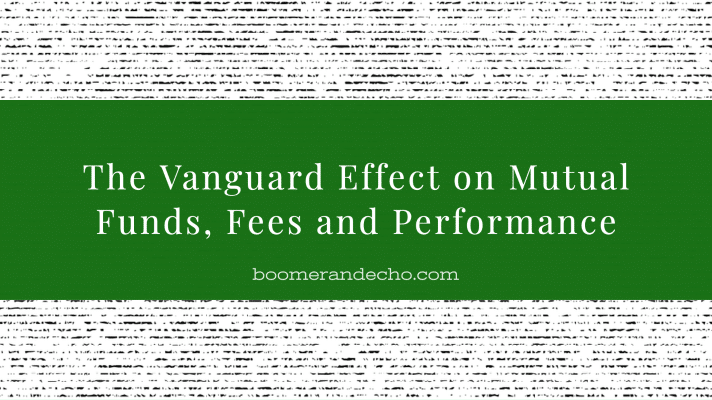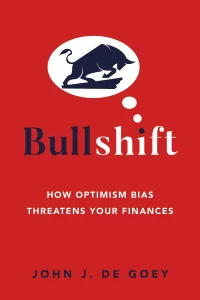Vanguard is best known in Canada for its low cost, passively managed ETFs. Indeed, since entering the Canadian market in 2011, Vanguard now boasts a line-up of 37 ETFs with more than $40 billion in assets under management – making it the third largest ETF provider in Canada.
Keeping costs low is in Vanguard’s DNA. Their low fee philosophy hasn’t only benefited investors in Vanguard ETFs – it’s helped drive down costs across the Canadian ETF industry. This process has come to be known as the “Vanguard Effect.”
The cost of Vanguard ETFs is 54% lower than the industry average. Since 2011, they’ve cut their ETF’s average MER by almost half – saving their investors more than $10 million.
The Vanguard Effect has made a noticeable difference for ETF investors in Canada, but the vast majority of Canadian investments are still held in actively managed mutual funds.
- Mutual fund assets totalled $1.896 trillion at the end of May 2021.
- ETF assets totalled $297.4 billion at the end of May 2021.
The Vanguard Effect on Mutual Funds
Vanguard took aim at the Canadian mutual fund market three years ago with the launch of four actively managed funds, including the Vanguard Global Balanced Fund (VIC100), the Vanguard Global Dividend Fund (VIC200), the Vanguard U.S. Value Windsor Fund (VIC300) and the Vanguard International Growth Fund (VIC400).
| Ticker | Name | Category | Management Fee | MER |
|---|---|---|---|---|
| VIC100 | Vanguard Global Balanced Series F | Global Equity Balanced | 0.34% | 0.54% |
| VIC200 | Vanguard Global Dividend Series F | Global Equity | 0.30% | 0.48% |
| VIC300 | Vanguard Windsor U.S Value Series F | US Equity | 0.36% | 0.54% |
| VIC400 | Vanguard International Growth Series F | International Equity | 0.40% | 0.58% |
With three years under their belt in the Canadian mutual fund space, I thought I’d check in on the performance of Vanguard’s mutual funds.
While investors can’t glean much over a three-year period, the Vanguard funds have performed well compared to their benchmarks and industry peers.
- Vanguard Global Balanced Fund (VIC100): +9.28% – VIC100 is a global balanced strategy with a strategic mix of 35% fixed income and 65% equities. It was designed to mirror the Vanguard Global Wellington Fund offered in the US – a 5-star rated fund by Morningstar. VIC100’s returns place it in the first quartile of its Global Equity Balanced category since inception.
- Global Dividend Fund-Series F (VIC200): +6.06% – VIC200 invests in higher dividend yielding securities across the globe. Its style has been out of favour for most of the time since inception as markets have preferred high growth companies that don’t pay dividends. That has changed Year-to-Date (YTD), and VIC200’s returns are in the first quartile of its Global Equity category.
- Windsor U.S. Value Fund-Series F (VIC300): +11.28% – VIC300 is the sister fund to the Vanguard Windsor Fund, offered in the US. The fund offers exposure to US large and mid-cap value stocks. Its value orientation was out of favour for the last few years but it’s ahead of its Russell 1000 Value Benchmark after fees since inception. As value has roared back, the fund is in the first decile of the US Equity category in Canada YTD.
- International Growth Fund-Series F (VIC400): +19.20% – VIC400 has been a top performing fund since inception. It offers exposure to stocks primarily outside of North America. It mirrors a fund of the same name offered to US investors since 1981. The US fund is rated 5-stars by Morningstar. VIC400 has outperformed its benchmark by 12% per year.
| As of Jun 30, 2021 – Peers beaten in the fund’s Morningstar category | ||||
|---|---|---|---|---|
| Ticker | Name | Category | Annlzd 3 Yr | % Peers beaten 3 Yr |
| VIC100 | Vanguard Global Balanced Series F | Global Equity Balanced | 9.28% | 79% |
| VIC200 | Vanguard Global Dividend Series F | Global Equity | 6.06% | 12% |
| VIC300 | Vanguard Windsor U.S Value Series F | US Equity | 11.28% | 30% |
| VIC400 | Vanguard International Growth Series F | International Equity | 19.20% | 98% |
[Editor’s Note: in September, Vanguard Canada launched two more mutual funds: VIC500 and VIC600]
I recently had the opportunity to speak with Tim Huver, Head of Intermediary Sales at Vanguard Investments Canada about the success of their mutual funds and what we can expect in the future. Continue Reading…

















